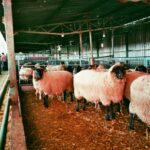Aflatoxin contamination is a serious concern for farmers, traders, and consumers alike. Produced by certain species of the Aspergillus fungus, aflatoxins are toxic compounds that can develop in grains such as maize, groundnuts, sorghum, and rice—especially when stored under warm, humid conditions. High aflatoxin levels not only pose significant health risks to humans and animals but also lead to financial losses due to rejected crops and trade restrictions.
Preventing aflatoxin begins well before grains reach the storage facility. It requires a combination of good agricultural practices, careful post-harvest handling, and smart storage solutions. Here’s how to reduce the risk of aflatoxin in stored grains effectively.
1. Harvest at the Right Time
Delayed harvesting can expose grains to rainfall, insect damage, and mold growth—all of which increase the risk of aflatoxin contamination.
- Monitor crops for maturity and harvest promptly when grains are fully dry and hard.
- Avoid harvesting during wet or humid weather, as moisture increases fungal growth.
2. Dry Grains Thoroughly Before Storage
Moisture is the number one factor in aflatoxin development. Grains should be dried quickly and thoroughly to reduce the risk of mold.
- Dry grains to a safe moisture content (generally below 13% for maize and below 10% for groundnuts).
- Use mechanical dryers if possible, or sun-dry on clean tarpaulins or raised platforms to avoid contact with soil.
- Stir grains regularly during drying to ensure even moisture reduction.
3. Sort and Clean Grains Before Storage
Damaged or discolored kernels are more likely to be contaminated with aflatoxins. Removing them before storage improves quality and safety.
- Manually or mechanically sort grains to remove moldy, insect-damaged, or broken kernels.
- Clean out debris, husks, and foreign matter that can harbor mold spores or pests.
4. Use Airtight and Moisture-Proof Storage Containers
Proper storage plays a critical role in preventing aflatoxin formation after harvest. Grain must be kept dry and protected from pests and humid air.
- Store dried grains in hermetically sealed containers such as PICS bags (triple-layered bags), metal silos, or other airtight storage systems.
- Ensure containers are clean, dry, and stored in a shaded, well-ventilated area.
- Avoid storing grain directly on the floor—use wooden pallets or raised platforms to prevent moisture absorption from below.
5. Control Pests and Insects in Storage Areas
Insects can damage grain and introduce fungal spores, creating entry points for aflatoxin-producing fungi.
- Clean and disinfect storage facilities before use.
- Use insect-proof containers or add natural repellents like neem leaves or dried chillies.
- Regularly inspect stored grains for signs of insect activity and apply safe pest control measures if needed.
6. Monitor Temperature and Humidity Levels
Warm, humid conditions accelerate fungal growth. Keeping storage environments cool and dry is essential for long-term grain safety.
- Store grain in locations where temperature and humidity are consistently low.
- Use moisture detectors or hygrometers to monitor environmental conditions.
- If feasible, install ventilation systems or fans to improve airflow and reduce condensation.
7. Avoid Mixing Old and New Grain
Mixing newly harvested grains with older stock can spread contamination and make it difficult to track problems.
- Always store new harvests separately from older grains.
- Use a first-in, first-out (FIFO) system to ensure older grain is used or sold before newer stock.
8. Use Biological Control Where Available
Some farmers now use aflatoxin-reducing biocontrol products, such as Aflasafe, which introduce non-toxic strains of Aspergillus to outcompete aflatoxin-producing fungi in the field.
- These products are applied before harvest to reduce contamination risk in the field.
- When available, they can be a powerful part of an integrated aflatoxin management strategy.
Preventing aflatoxin contamination in stored grains is achievable with good practices throughout the crop production cycle. From timely harvesting and thorough drying to smart storage and pest management, each step plays a role in protecting grain quality and consumer health. By adopting these practical measures, small-scale and commercial farmers alike can improve the safety of their harvests, maintain market value, and contribute to a safer food supply.
Join 'Farmers Mag' WhatsApp Channel
Get the latest Farming news and tips delivered straight to your WhatsApp
CLICK HERE TO JOIN






